★ Illusion of Separation ★ Sociophysical Postulates I – XI ★
Emulation of Ancient Thought: Penultimate Metacognition
★ Into The Tragic Comedy of Fate, I Cast Myself
★ A Marathon and Thermopylae for the Spartan
★ Novel Types of 21st Century Territory and Their Thermopylaean Chokepoints
★ An Eden Of Sociocultural Experimentation, Borne From The Idiosyncracic Geography of Greece
Social and Informational Thermodynamics and Convexity
★ Thermal Convection of Information
★ Humanity’s Measures of Connectedness Vary Geographically
★ Mesopotamia And Mesoamerica: The Old World Connectivity Maximums
★ North Korea as a Global Minimum of Connectivity
★ North Korean Paranoia Undermined Their Posture For Economic Development
★ All Significant Revolutions Expect Paranoia For Their Violent, Treacherous Transgressions
★ North Korea’s Strategy Never Had An Endgame
★ America and Europe as a Modern Sociophysical Connectivity Maximum
★ Artificial Diminuation and Amplification of Information Yields Dangerous Self-Delusion
The Bird’s Eye View of Social Physics
★ Do You See What I See?
★ An Infinite-Dimensional Generalization of Physics and Molecular Dynamics
★ A 19th Century Attempt to Quantify Sociological Phenomena
★ How Does The Information Schema Affect The Spatiotemporal Computability?
★ Sports Like Soccer Or Football Are Well-Defined Sociophysical Games
“Please, Sir, You Are Blocking The Light Of Mathematics”

Postulates ⌈i⌉ – ⌈xi⌉ of Sociophysical Systems
⊗ ∆ ⌈i⌉ There Are Infinitely Many Types of Sociophysical Energy Having Both Linear And Non-Linear Mechanics That Determine Their Equivalence and Interaction Dynamics
⊗ ∆ ⌈ii⌉ Mechanics of Social Interactions And Connections Are Physical and Logical, But Increasingly Virtualized
⊗ ∆ ⌈iii⌉ Power Describes The Rate of Energy Fluxing Through Sociophysical Networks
⊗ ∆ ⌈iiii⌉ Social Power Depends On Potentials For Types Of Energy Flux, Each Actual And Perceived
⊗ ∆ ⌈v⌉ Perceived Beliefs Drive Social Power Dynamics Via Positive and Negative Feedback Loops
⊗ ∆ ⌈vi⌉ Agents Have Varying Degrees Of Autonomy and Individual Definitions Of Energy Types. They Share Traits, Such As Concurrency, Bandwidth and Physicality
⊗ ∆ ⌈vii⌉ To Hedge Against Domain Complexity, Agents Amplify Perceived Beliefs And Interact In Other Ways
⊗ ∆ ⌈viii⌉ Spectral Coherence of Knowledge, Information and Agent Context Strongly Influences Conceptualization and Anticipation
⊗ ∆ ⌈ix⌉ Social Circuitry Enables Sociophysical Energy Flows, Where The Superposition Principle Applies Circuit and Network Topologies. All Exist Simultaneously
⊗ ∆ ⌈x⌉ Social, Financial and Other Energetic Flows Signal Interest and Intent Via Frequency, Magnitude and Abstract Spectral Decomposition
⊗ ∆ ⌈xi⌉ Disruption of Connections & Interactions Alters Flow Of Energy & Power, Physically, Logically and Virtually
Postulates ⌈xii⌉ – ⌈xx⌉ of Sociophysical Systems
⊗ ∆ ⌈xii⌉ Even When Invisible, Intent Is Further Signified And Clarified By Parallel, Anti-Parallel and Orthogonal Orientations of Motion As They Relate to Laplacian of High-Dimensional Surfaces
⊗ ∆ ⌈xiii⌉ Whether Cognizant, Nearly All Attach Their Behavior, Thoughts and Identity To Equilibria In Social Games. While Unbound From Conceived Attachments, Our Energy Becomes Labile, Formless, Trackless and Incomprehensible to Those Who Lust For Power.
⊗ ∆ ⌈xiv⌉ The Evolutionary Dynamics of Social Physics Build Upon Antifragility and the Ideas of Programs in Chaos
⊗ ∆ ⌈xv⌉ For Timescales Both Small and Large, Each Agent’s State and Context Is Constructed From Their Sum Of Experience Via Directed Focus
⊗ ∆ ⌈xvi⌉ Everything is a particle. Everything is a Wave. Even Information, Modeled Holonically
⊗ ∆ ⌈xvii⌉ Models of Sociophysical Phase Change Require Topological Spaces Imbued Onto Physical and Aphysical Topologies
⊗ ∆ ⌈xviii⌉ Independence and Connectedness Can Be Measured In Sociophysical Network Topologies
⊗ ∆ ⌈xix⌉ For The Efficient and Pragmatic Assertion of Behavior and Intent, Sociophysical Configuration Entropy is Nearly Unparalleled
⊗ ∆ ⌈xx⌉ Information In Holonic, Particle Form Exhibits Complicated Behavior Analogous To Entanglement
Emulation of Ancient Thought: Penultimate Metacognition
There are countless aspects of life that ancient people understood more clearly than we do today. In many, standing on the shoulders of giants has yielded crippled versions of ourselves because we were always molded and die-cast by typologies of life experience now decimated by technology.
Into The Tragic Comedy of Fate, I Cast Myself

For the powerful, this is desirable. They can sell us technology to solve our problems, while our growing dependencies on it short-circuit the types of life experience that imbue our worldview. In some ways, this makes us easier to control. We simply do not have the same sheer drive that powers those of us who have learned through pain and all the simple joys we’ll never know. For all its benefit, power and utility, Technology can never replace this value of the struggle. The societies who artificially maintain these mechanisms enjoy prosperity and remain strong.
A Marathon and Thermopylae for the Spartan
At the battle of Marathon, the Greeks defeated the Persians. News of this victory was so critical that Pheidippides ran over twenty miles to bear news of it’s victory. Every marathon you run is part of a millenia-old celebration of being the first to deliver a message.
What’s the value of a message? How does cheap and free transmission affect us? How does it lead to progress? The power of a simple message unimpeded can change the course of civilizations. At Thermopylae, the brave acts of hundreds of Spartans struck fear into the hearts of Persians and funneled vigor into the hearts of Greeks to rise up and resist the oncoming hordes. Would this envigorating effect have been possible if not for the story? What if it couldn’t be told?
Theseus in America - Sails
Novel Types of 21st Century Territory and Their Thermopylaean Chokepoints
The importance of Thermopylae to the Spartan victory was their tactical utilization of the territory. It’s the greatest story of deception leading an army to a chokepoint. Today, with information warfare, sociohierarchical conflict, economic warfare, there are many novel kinds of territory. For each type and metatype of sociophysical territory, where are the imaginable chokepoints?
An Eden Of Sociocultural Experimentation, Borne From The Idiosyncracic Geography of Greece
During the first millinea B.C., a confluence of Greek technology, culture and geography, encouraged a philosophic exploration of human life. In particular, the Greek city-states flourished at a time where reflection on the structure of society itself was encouraged, where its evolution occured at a rapid pace and operated long enough without being domineered by an external force. This itself wasn’t unique, but we managed to maintain their literary tradition. In doing so, we preserved the best record of this phenomenon in Western history.
Socrates Engaging the Greek Agora In Philosophic Debate
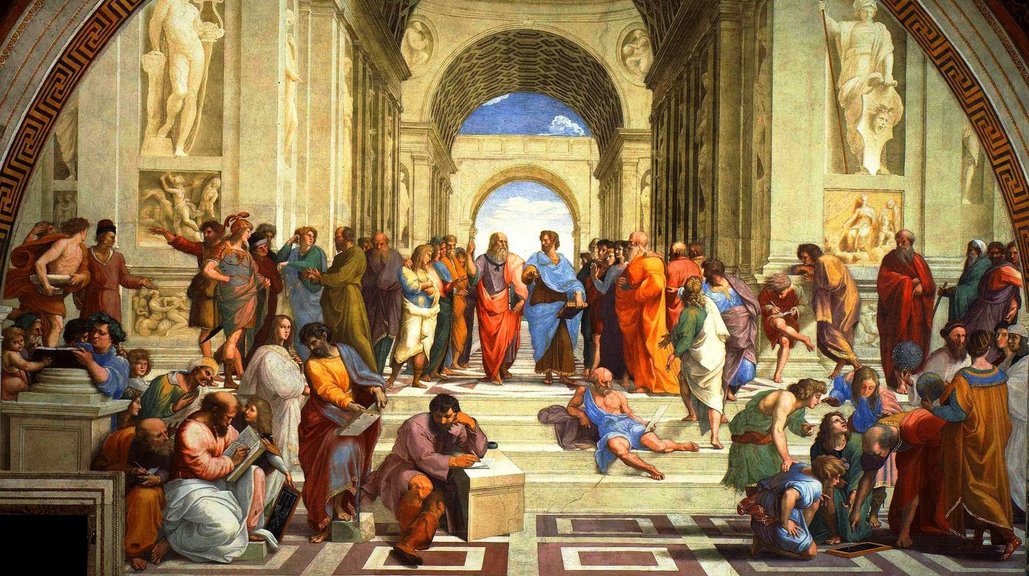
Social and Informational Thermodynamics and Convexity
In the ancient world, population growth and movement was tightly coupled to economic opportunity, constrained by resources, and bounded by geography. Population quantity drives the total quantity of information and increases the rate at which innovations occur via the network effect. Population density increases the rate at which information moves in those sociophysical networks.
Imagine humans as particles with random motion whose individual speed of vibration depends on available vehicles of transit, intended destination, resource distribution and other factors. The particles vibrate in patterns, almost certainly originating from some home point and returning to it every day. When these particles hit the ocean at a port, they accelerate like sound hitting a solid barrier, assuming these people have ships and sails.
Thermal Convection of Information
Imagine the sun rising in the Far East. It heats up the air and water, giving us wind and ocean currents, but doesn’t its sociophysical energy also reverberate through humanity? As the world turns each day, there is random motion moving from the east to the west, driving social interactions. Pushing through the noise are faint, low frequency waves of cultural information rippling over and reflecting between geographic features. Vacuums of low population density taper this resonance. Between the centers of civilization, the dispersion of information is strained through translingual membranes, limiting the number of social connections over which information can cross. These metaphors are not perfect, as behavior was not coordinated and our modes of transportation were limited throughout history.
Land of the Rising Sun: Low-Frequency Sociophysical Currents Emerge from the East

Humanity’s Measures of Connectedness Vary Geographically
Consider the human population distribution of 5,000 BC. At this time, we had dispersed from Africa through the Middle East and around the Black Sea to India, Europe, China, Indonesia and the Americas. At that time, was there a region more connected than others? The most connected region was the Middle East. And people in regions less connected? Those in island nations or beyond the tropics of Cancer and Capricorn, both of these would incidentally be more likely to understand the spherical shape of the earth.
Mesopotamia And Mesoamerica: The Old World Connectivity Maximums
As for the Middle East, its high degree of connection, its proximity to geographic chokepoints and its access to large swaths of ocean surface area gave it an almost unparalleled economic advantage, which only grew as time marched on. This region had the shortest actual distance to the most number of people, and access to the largest social graph neighborhoods, depending on how you measured it. When people are more widely distributed, their social networks are more sparsely interconnected; larger 2° and 3° networks are less common, unconsciously shaping the dynamics of information diffusion, thereby diversifying the resulting information economics by contributing to asymmetric factors of supply and demand. Those with wealth could finance transport and delegate action, which further helped expand those networks, but this rendered the sparsely interconnected exterior regions dependent. To compensate for their paucity of informational and financial flux, the latter exterior regions were compelled to socially gravitate towards channels of commerce.
The shifting power centers of Olmec, Maya, Inca and Aztec repositioned the Mesoamerican nexus of connectivity. Why? Strategic control over the Panamanian isthmus conferred the same economic and sociophysical benefits as control over the Mesopotamian region. The power centers shifted in America, just as they did in center of the Old World for the Sumerians, Akkadians, Assyrians, Babylonians and Hittites.
North Korea as a Global Minimum of Connectivity
North Korea is an example of a major concave depression in sociophysical graphs. This leads to restricted economic growth and almost total disconnection of the populace from the outside. Both of those lead to poor decisions by the North Korean leadership. They are so disconnected from the rest of the world, coupled with internal policy to ruthlessly quash all information contradicting state policy, that their upper echelons of leaders couldn’t know to question the promulgated by their highest echelon, especially when apropos to North Korean dogmatic maxims. It’s a classic power trap: insulation from threats leads to disconnection and bad decisions.
If the range of 2° neighborhoods of North Korean citizens is compared against other nations, you’ll find that it is incredibly limited when compared to similarly sized populations. Proportional to their population, they might be the most socially-restricted nation on earth, which is unbelievably depressing. Pictured below is a graph visualization of what North Korea’s socioeconomic connections might look like. Alternatively, you can relabel North Korea as “Me” and the Int’l Economy as “American Society.”
Graph Visualization of North Korea’s Economic Connections
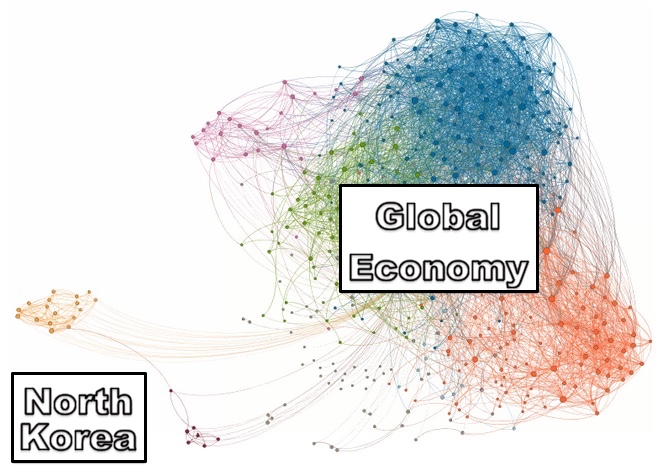
How can you compete in the global economy if your regime prohibits communication with the outside and punishes dissidents with three generations of family persecution? How can you export products if your citizens cannot freely establish relationships with people and businesses in other countries? NK cannot belligerently flaunt international norms for something as critical as nuclear weapons. The NK regime undermines its own potential development of exports and economic competitiveness by pursuing such a dead-end strategy while caring nothing for realistic economic development. Until they turn around their nuclear programs that endanger international security, NK will continue missing out on the greatest period of human development because they’re stewing over something that happened four generations ago.
North Korean Paranoia Undermined Their Posture For Economic Development
The future of the world lies in the information economy and information warfare. Today, what matters most is the sociohierarchical territory and informational territory that sets you up to maintain prosperity. How can you ever expect to compete in the information economy with completely restricted access to the internet and near-zero consumer adoption of internet-capable devices? You can’t, which begs the question: who is informing your leadership’s long-term strategies? In a digital economy, products are informational. NK citizens simply can’t be consumers or producers of content. AFAIK, NK citizens aren’t even allowed to have radios because NK paranoia is stuck in the 1960’s soviet mindset of information control.
All Significant Revolutions Expect Paranoia For Their Violent, Treacherous Transgressions
All communist revolutions expect such paranoia and they use it! Even for those non-Marxist revolutions – viz. all revolutions with significant turnover of control – the leadership expects that the employment of pre-revolutionary subversion to gain sociohierarchical territory involves dirty tricks with disgusting karma. So, they plan on using it. But, in trying to undermine any possibility of dissent – and by being disconnected from the world with poor strategy being supplied from outside – North Korea has left itself not unlike a nation lacking ships to engage in maritime trade. Paranoia of imperialism indirectly contributes much of NK’s isolation. Even if it does pull off being a pawn for initiating nuclear war, that only means NK will be isolated even more. North Korea needs to come to the negotiation table and we need to sort this out. The first thing that must happen is total nuclear disarmament and the rest of the world is infuriated that NK leadership expected to use nuclear weapons as bargaining chips.
North Korea’s Strategy Never Had An Endgame
North Korea’s strategy has no endgame, other than becoming an international school shooter. Since the 1980’s, this strategy has left No hardware platform for internet, no participation in the information economy, no media creation tools, no training or education on those tools, no content production, no culture export, no connections developed and interactions with the outside are discouraged. How did the North Korean leadership miss this? Because they artificially dampen all signal that could be perceived as dissent, wavering, or retreat. This enables the prolonged development of silent risk and massive tail risk, as Nassim Tebar would probably put it. NK is actually far-left with components of far-right ideology.
America and Europe as a Modern Sociophysical Connectivity Maximum
America, Europe and the West form a global connectivity maximum. This gives us diversity and some challenges related to multiculturalism. However, those issues must be overcome eventually and we did so early. Further, our populations are inundated in collective understanding of even cultural minutia via the encouragement of connection to peoples of all ethnicity and culture. This starkly departs from the traditional wisdom in the Art of War where you insulate your culture from any external influence, yet in the modern world, it results in perhaps the greatest advantage that we have. Why? The world is one and always has been one. We must overcome these issues at some point and we have, which has also made America and Europe and other highly connected non-Western regions connectivity maximums. This fuels our platform for economic growth.
Artificial Diminuation and Amplification of Information Yields Dangerous Self-Delusion
Furthermore, we’ll never find ourselves in an isolated fortress, which is Law #18 of the 48 Laws of Power. If we do not artificially silence this diversity of signal, we can remain apprised and aware of our nation and developments in the international world. Instead, it seems we artificially mute signals on the basis that they are different. Since people often become conditioned to fear that which they don’t understand, it shrinks the needles in the haystack that are precious, distinct forms of information, which should clue us into developments we must react to. In highly permeable, tightly connected information environments, we are more likely to receive those signals unless we enact policy to stimulate widespread fear over anything that might be different. Some information is dangerous, but we are throwing the baby out with the bathwater.
The Bird’s Eye View of Social Physics
When an eagle looks down, using it’s impressive eyesight to soak up what it can, does the world appear as 3D or 2D? Its perspective from that height provides a dimensional reduction and the details it absorbs enables it to see shapes and patterns emerge in individual and social behaviors, unaware to the animals engaging in those behaviors. Humanity might think itself peaking the top of the food chain, but birds of prey are also elevated among the rest of animals in many ways. This status creates the imagery and fuels the strong symbolism that motivates the depiction of birds of prey in national flags, as well as their prominent place in myth and culture. By observing birds of prey from a distance, if you’re lucky enough to see one, you can indirectly glean information about your surroundings, if you’re wise and foolish enough to make those inferences.
A View of the Alps From An Eagle’s Perspective
Do You See What I See?
Sociophysical systems are usually too complex to yield perfectly scientific evidence, these metaphors and metrics are invaluable tools yielding philosophic insights. They sharpen our inductive reasoning for social behavior and history, giving us options that will yield concrete scientific evidence. Most social systems modeled with physical components are incomputable, but computational social science is harnessing these ideas today.1
An Infinite-Dimensional Generalization of Physics and Molecular Dynamics
Information has a life of its own. Nowhere does this become more clear than in social physics, which is a mathematical framework for modeling idealized social behavior with physical constraints. The initial revelations of social physics yield mind-blowing epiphanies for structuring, objectifying and quantifying social interactions. The bad news: almost every problem is incomputable. Still, one can extrapolate incredibly useful insights from the mere philosophic exploration of social physics.
A 19th Century Attempt to Quantify Sociological Phenomena
This Ain’t Nobody’s First Rodeo
Social physics was originally developed in the 19th century to quantify sociological situations and particularly how the behavior of players in social games are affected by the imposition of physical constraints. It originally borrowed heavily from classical mechanics and now overlaps with quantum mechanics, since non-deterministic games are loaded with probabilistic mechanics. Social physics can help us understand team sports, advanced swarm behavior, the geometric mechanics of battle tactics, cocktail parties and the finer mysteries of feng shui. Each of those activities is determined by the physics of the space and the players in a social game with rules. Though with feng shui, the game and players may be less clearly defined.
Essais sur la Mechanique Social (Winiarski, 1898)
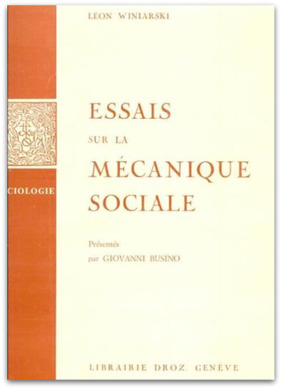
How Does The Information Schema Affect The Spatiotemporal Computability?
If you begin modeling games where players have their own sets of information, social physics is rendered irrevocably and hopelessly incomputable, almost immediately. Each additional layer presents its own challenges of tractibility and data structure countability. Simulations that can be parallelized with a GPU have tight information schema requirements. Knowing this, how do you identify what can be modeled and made known? How do you structure an organization’s logistics and data collection requirements to efficiently model social phenomena and information dynamics? What’s the difference between what can be simulated and what can be inferred via data science? Specifically, what schematic components and strucural patterns increase the space and time required for computation?
★ Do the players contain their own copies of information or is it shared?
★ Do instances of information adhere to a defined schema shared among all players?
★ Can the information schema be modified?
★ Can the information be known in totality for the game?
★ Can a player access their own information in totality or reflect on its schematic structure?
★ Do players need to make inferences based on the information schemas of other players?
From the short list above, it isn’t clear which adds the most complexity or how, but players almost always operate with incomplete understanding in social situations. They can do so effectively because they’ve been conditioned to develop sets of proactive and reactive behaviors sidestep the issues of scale and complexity. The particular tactics to handling or circumvent complexity create their own dynamics for information in sociophysical games. Information overload can negatively affect players. The topics pertaining to information schema and information reflection add an incomprehensibly infinite degree of complexity. For the mathemtaticians, yes, modifiable schemas with or without reflection are definitely uncountable.
Sports Like Soccer Or Football Are Well-Defined Sociophysical Games
All of this means that players have to be good at handling information, but better at balancing uncertainy and risk with goal-seeking behavior. If the game being modeled is soccer or some other team sport, there are subtle sociophysical micro-tactics that can vastly improve team performance, such as ensuring visibility and other mechanics of assessment and communication. If the team works together and can share its understanding of the state of the field, this can help immensely with coordinating tactics.
There are other physical aspects of soccer which are also modeled by social physics, such as the typical FIFA 2017 stats: speed, energy, skill, etc. The best players in the world can play together, but unless they can read each other and anticipate the coordination of tactics with limited signaling, the games will be reduced to the more physical stats and positioning.
Social physics is distinguished from physics and simple models of swarm behavior by providing a framework where players react to informational components and dynamics emerging from information. This framework starkly contrasts simple probabilistic models for social behavior with its focus on the spatial components and particle interactions.
Postulates of Sociophysical Systems
Extrapolating from a basic assessment of the math, there are implications and ramifications that attain preponderance, standing above everything else. Stubbornly clinging to ideology constructed around fast-fading pyschosocial paradigms, novel sociophysical phenomena instead remain unseen shadows whose origins in ancient social foundations elude us: not for some innate opaque ignorance, but for the lust to control knowledge for power. History has blessed humanity with incidental inculcation of wisdom, channeled through obvoluted teleology – now rendered preterite by foredominant postponderence. Tapped into leylines carved from bedrock, as these qanat rapidly sublimate from Anamnesis, our utopic oasis will invisibly fade as a mirage.
Qanat Access Shafts And Channels Align With The Flow of Water Along The Bedrock2
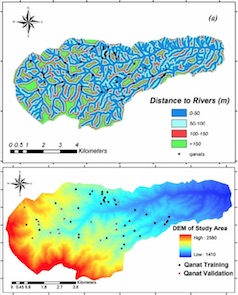
By failing to fully understand sociophysical phenomena, by stubbornly clinging to ideology constructed around fast-fading psychosocial paradigms, by refusing to allow adaptation, we fall victim to Nietzche’s danger of dangers. This is not to say that morality and well-defined, top-down values systems will themselves be antiquated. Quite the opposite: we need to reinforce those systems that already exist, but augment them with agile, flexible and antifragile values systems that can fill in the gaps. For their followers, any such belief systems must unfold into values systems with strong unifying force, arising from a basis for values sharing a common root of truth.
Magnetic Field Lines From Two Adjacent Electromagnets
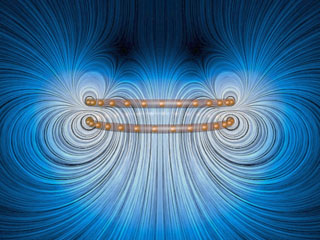
Today, the world needs everyone on the same page. In order to operate cooperatively in more virtualized sociophysical systems, we must first develop a clear understanding of their purely physical counterparts. Psychological and sociological understanding has always been the mostly useful knowledge, especially when there was little technology and nothing to use for the construction of great works but the hands of men.
⊗ ∆ ⌈i⌉ There Are Infinitely Many Types of Sociophysical Energy Having Both Linear And Non-Linear Mechanics That Determine Their Equivalence and Interaction Dynamics
Just as the laws of particle physics are modeled as objects interacting energetically with shared fields, sociophysical phenomena also operate with fields and energy. The difference is that social physics is the ultimate abstracted generalization of physical laws and thus, to say that it is infinitely more complex means you have a limited conceptualization of infinities.
The most important shared field is the field of attention. In all physical and virtual social interations, people want to know what other people are interested in: they are asserting and measuring perceived beliefs to mitigate the system’s complexity. Imagine this field in a physical example to entertain an idea of the maximal and minimal strength of force on this field. You’re at home, alone. Does anyone know where you are? Is your behavior going to influence someone else’s behavior? No. Without internet, your impact on the shared field of attention is nearly zero.
Semblable Magnetism Aligns The Orientation Of Nearly Every Fan’s Field of Vision To The Center of Action

Now imagine yourself at a concert or a football game. People exert influence on the shared field of attention with their focus. Their field of view, as it is perceived by other people, exhibits an effect on the field of attention. People are always looking to see where other people are looking. The laplacian of a field tells us how this changes, when and where. So, at a concert or football game, if all the people were particles, they would be magnetically aligned to the field lines. At a concert or football game, there would be a nearly maximal value for the deformation in the field.
⊗ ∆ ⌈ii⌉ Mechanics of Social Interactions And Connections Are Physical and Logical, But Increasingly Virtualized
Via these shared fields, people influence each other via sociophysical energy exchange. These fields are mapped ontop of physical and logical spaces and we can intuitively measure the flow of energy across them. Unlike the electromagnetic field, these fields are individually conceptualized, so there are infintely many of them and infinitely many energy types. Moreover, equivalent exchange of energy is almost never preserved. While there are mechanics of energy exchange and transduction, the nonlinearity makes the conversion of energy types difficult to anticipate.
These fields can be imagined as spaces with the potential to facilitate sociophysical energy exchange – with a strong departure from physics: there is pronounced variation in the topology of the spaces. There are fields with physically derived topology, graph topology and any kind of conceivable topology. These are simply tools for attempting to model what is far more complex than can ever be known.
The importance of sociohierarchical structures has always entailed the use of logical, non-physical components to strategize or anticipate sociophysical phenomena. These topologies – either fully or partially derived from logical relationships between people, groups, or other nodes – form fields where the energy mechnics operate like electrical circuits. These form emergent logical topologies, where the social graph might be overlayed onto physically interacting particles.
Electrical networks are an example of physical phenomena with a logical graph-based structure overlayed on top. When determining the structure and components of circuits, would you first consider the physical proportions of the components before considering the types and composition of components? What happens when you remove components like resistors or capacitors from series or parallel circuits? Does it help much to first think about physically derived microphenomena of the system, like the Skin Effect? Or would you start with top-down methods to examine the phenomenological end-goals of circuit structure: whether it a logical network of components forms an amplifier or a transformer?
In reasoning about these systems and the range of possibilities, the resulting dynamics and mechanics are neither purely physical or purely logical. By logically reasoning about the systems and gradually accreting structure, we attain flexible, efficient skill to combinatorially evaluate circuit structures to achieve a maximum of phenomenological agility.
On top of the physical world, we have constructed technology that facilitates instantaneous communication, starting with the telegraph. This has rapidly progressed, giving us the phone system, the early internet and culminates in nearly superconnected networks of optical cable. The world is well aware this means the digital world is more relevant than the physical. What we’re not ready for is the pure manisfestation of the metaphysical into the physical realm.
Today, almost all human communication is, in full or in part, being conducted across this logical communication infrastructure. The majority of artifacts of human interaction and human activity are now purely or mostly digital. Most critically, the physical aspects of sociophysical conceptualization, strategy and tactics are less dominant. The virtual and logical aspects are instead being amplified to such a degree whereby the physical is almost secondary. The logically derived topologies, such as sociohierarchical structures and relationships, now matter more than ever.
Superconnected communication infrastructure evinces novel conditions of possibility for sociophysical phenomena humanity has never encountered. Other phenomena will seem to be radical departures from dynamics and mechanics we know and love in modernity. Therefore, our generations should begin conceptualizing their world primarily in terms of these logically and informationally derived spaces. Again, these tools for strategizing and managing human interactions have always existed in one form or another, but hidden from most. However, this purely physical world is no longer the one we live in, but if we do not retain our individuality, our humanity and our sense of purpose, nihilism will rapidly corrode through any system structure, no matter how antifragile.
CPU’s Are like Metaphysical Copy and Paste
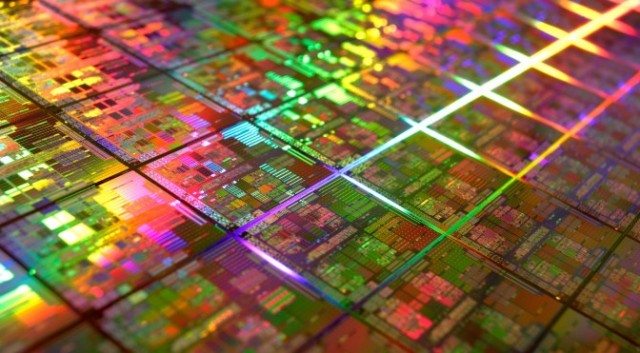
What is the CPU? What does it represent? Mastery over physics and solid-state chemistry? Doesn’t it also represent mastery over logic, math, Gödel, Turing and especially Von Neumann machines? Nevermind that, it represents the manisfestation of all this knowledge into the physical plane, whereby the metaphysical facsimilarly imbues itself into the structure of matter. This is the physical reification of a materialistic or idealistic conception of the metaphysical: a machine capable of executing instruction sets, numbered according to Gödel’s transcendental revelations on the countability of mathematic structures themselves. They are Logic, borne into demigod form, themselves capable of virtualizing physical systems.
⊗ ∆ ⌈iii⌉ Power Describes The Rate of Energy Fluxing Through Sociophysical Networks
When conceiving social circuitry, people, groups and roles all form components in networks that conduct, magnify, time and regulate sociophysical energy flows. Electrical components can be conceivably form metaphors for a typology of social circuit network design. In such circuits, social energy flows through networks where all components are connected. Disrupting any power flow and affects all power flows. Changing, reversing, inserting, tuning the components influences the flow of power and energy flux across the rest of the systems.
Nietzsche, in Twilight of the Idols
Even a rapid estimate shows that it is not only obvious that German culture is declining but that there is sufficient reason for that. In the end, no one can spend more than he has: that is true of an individual, it is true of a people. If one spends oneself for power, for power politics, for economics, world trade, parliamentarianism, and military interests — if one spends in the direction the quantum of understanding, seriousness, will, and self- overcoming which one represents, then it will be lacking for the other direction.
Perhaps using different terms, Nietzsche was attempting to explain how the opportunity costs of both sociophysical energy investment or alterations of sociohierarchical components. When conceptualized with the language of circuitry, this becomes more clear. Did Nietzsche understand what one can attempt to quantify with non-linear energy mechanics? In such non-linear systems, energy equivalence is almost never preserved.
Similar to power in electrical networks, sociophysical measures of power are defined as the potential to trigger flux through social networks and the rate of that flux. In this way, other metaphors can be applied to power and information flows; voltage, amperage, logic gating, albeit these operate in an extremely-high dimensional way. Further, there is no comparison between the near infinite and the infinite: infinite dimensional models are functionally divergent from their dimensionally-bounded linear counterparts. There is the curse of dimensionality, but then infinite dimensional math imposes profanity-inducing limitations…
I, however, do not understand the idiosyncrasies of infinite dimensional math. I am only of aware of this functional divergence in modeling these problems, as well as dramatic shifts in application of theorums. I only mention this to emphasize the differences in both dimensional scale and fundamental inferences relevant for dealing with the laws of physics, when abstractly generalized to conceptualize sociophysical systems.
Many Consequences of Sociophysical Energy Flux Can Be Imagined:
★ Physical Change
★ Sociohierarchical Change
★ Belief Structure Change
★ Change or Stagnation in Conditioned Behaviors
★ Informational Change
★ Informational or Hierarchical Schematic Change
So, then potential for power is defined as the capacity to project these changes into the world and action of power is defined as the rate of these changes, however enigmatic power may be to quantify, since the infinite variety of energy and transduction pathways render all intractible. Perhaps our inability to understand ourselves is a curse; perhaps it is a blessing.
The forms above are base types of changes to sociophysical structures as a result of the exertion of power. What we see in life are reconfigurations of the above. That is, we see the likes of:
★ Informational Change Yielding Physical Change
★ Informational Change Yielding Eventual Schematic Change On A Social Scale
★ Behavior Change Yielding Long-Term Physical Change
★ Physical Change Yielding Informational Change
In a tokamak, almost all fusion confined to local maxima of turbulence. Since fusion releases immense energy, these high flux regions destablilize adjacent plasma. The higher the rate of fusion, the greater the magnetic forces required to contain the chaos in the plasma. Recently, tokamak engineering has sought to overcome the structural limits of the frame: the tokamak is required to host magnetic fields so strong, it literally can’t hold itself together.
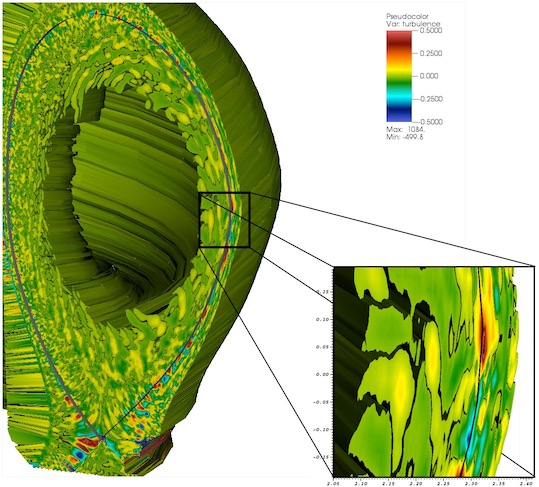
⊗ ∆ ⌈iiii⌉ Social Power Depends On Potentials For Types Of Energy Flux, Each Actual And Perceived
The potential for power and sociophysical flux arises from beliefs of nodes in the system, both actual and perceived. In this way, belief and perception can almost independently create types of energy.
Particularly valuable to understanding power flows is the differential of information available to nodes in the system. While information is neither linear nor simple, it consistently diffuses from the region of higher concentration to lower concentration. This could also be envisioned in terms of charge differential: electricity flows from areas of higher charge to lower charge. The nodes or cliques with higher density of information hold the cards; they retain options in disrupting currents or eddies of sociophysical state in networks with lower information density, as well as those with spectral content that appears functionally advantageous.
Knowledge Is Power
If there is already complete disemination of some pieces of information to a set of nodes, you have diminished the capacity to influence or restructure those nodes through the titration of information. These fluid dynamics analogies are overly simplified because, again, everything is a lower-order conjugation of the above higher-order forms.
Materialist metaphysics are blasphemous: information and knowledge are preexistent metaphysical forms; they can be discovered and rediscovered by anyone. When one uncovers them in isolation, but doesn’t understand the names for these discovered knowledge forms, it challenges the powerful in their ability to recognize and regulate that knowledge. So the powerful or their pawns, who don’t truly recognize substance – but the names of substance – consisently underestimate people like this. In the midst of campaigns to project disinformation into the lives of intelligence threats, these pawns of their material desires blind themselves because they don’t know true substance and they NEVER did.
In the 21st century knowledge is free. What do you think that means to the truly powerful, truly knowledgable few?
⊗ ∆ ⌈v⌉ Perceived Beliefs Drive Social Power Dynamics Via Positive and Negative Feedback Loops
Those of us with potential to drive sociophysical flux are like batteries of social captial. Economic flux operates similarly; capital dissipates when utilized, resulting in problem of opportunity cost. Who do you invest in and why? How do you make that decision? Further, social energy does not preserve equivalence nearly as well as financial capital, whose true value can be distorted by fluctuations in currency markets. This increased disruption in equivalence is driven by beliefs and perceived beliefs, which create and dispel social capital. This amplifies the negative penalties of social investment, when time or words are spent on pariahs and lepers.
Depressingly, there is little to be done done about information that already exists: what is created can never be destroyed. Disconnection is created by dis/information – it can only be relieved through inordinate investment of energy from peers. Therefore, those who seek to create disconnection as punishment do so by evoking information forms into someone’s life – then, they can attempt to sell the solution: projection of information forms intended to disrupt the disconnection. That’s called a con.
Regional, national and global history forms the basis for a language of ideas. Our collective understanding of recent events in history constantly changes, with fewer changes after narratives settle into the books. After a few decades, when it is clear how events unfolded, schools and universities multiply iota distribution of historical narratives. This results in spectral coherence, extending throughout the global if these events are relevant and necessary to understand as determining the course of history.
History is Written By The Victors
Traditionally, it is been very difficult to disrupt established narratives, whose distribution reaches some saturation threshold. Unfortunately, today, superconnected networks and decentralized content distribution has reduced barriers to adversarial projection of information. Newsfeed algorithms identify and market content primarily based on semantic and morphemic similarirty to what you share and engage with.
Window Functions
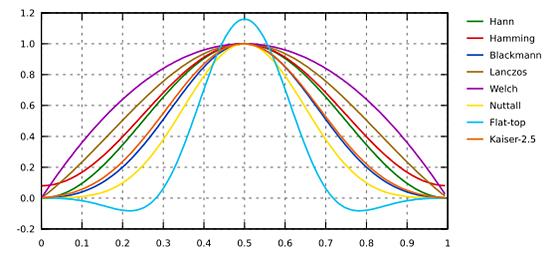
Analogous to a window function, this contextual aperture for past events and future expectations is rapidly expanding. It determines what information people consider relevent for framing and reexamining our perception of cause and effect. With this trend, the scope historical events that we are willing to reevaluate is expanding, becoming moreso preferential and strategic. This particularly dangerous consequence of spectral decoherence is pretty much terrible for all sides, especially those with something to lose.
Unless people work together, this incentive and capacity for disruption exacerbates a critical dynamic to be defined soon, which I have named the ablation of causality. Essentially, the ability for SOF to even form an understanding of causal relationships between events gradually sublimates. We become permanently dependent on technology, just to understand the relationships between events, both in public and private life. This is a disaster of disasters, with no apparent cause in sight; we are blinded by inundation and incomprehensible complexity.
And Hope And History Will Rhyme
History, as the collective narrative we all share, is under seige by disinformation run amok on superconnected networks. Socrates said myth should be structured so that the younger generation’s conception of the world is shaped by the heroes they look up to. If history instead becomes a weapon of information warfare, then this hurts every nation and group. It creates a situation where there is no shared understanding of the past.
⊗ ∆ ⌈vi⌉ Agents Have Varying Degrees Of Autonomy and Individual Definitions Of Energy Types. They Share Traits, Such As Concurrency, Bandwidth and Physicality
In this terse Treatise on Entity and Agency, three primary types of agency are defined, as well as concepts for agency within more abstract entities. Therein are convolved all the traits that dilineate an entity’s quality of agency. These traits fundamentally evince, negate or void the mechanics by which an agent interacts with and signals entities in their local sociohierarchical spaces. Through networks of biological, intelligent SOF entities, their spatiotemporal collisions and interactions engendered logically defined sociohierarchical structures. Through these intermeshed circuits, dominant and highly-connected entities channel their will, fluxing sociophysical energy to exert change.
The ability for concurrency in processing signal distinguishes the quality of agency for biological and mechanistic entities, as does the ability to simultaneously manifest oneself in multiple places in space. This is the root of aphysical projection of will, long ago circumvented by delegation via extended social networks. Still, until telecom, an individual could only project energy in one place at one time, bounding how quickly state changes could occur – i.e. fraud detection algorithms assume the ID for a physical credit card can’t simultaneously make purchases in Florida and Washington. Similarly, concurrency restraints on human behavior can identify online behavior, since bots can project a high density of interactions from the cloud. AAF beings are still mostly bound to completely virtual, aphysical forms, but will fast evolve from AAF and PAF and vice versa.
Power users can write scripts and set up Zapier event hooks

⇧ Then That Guy Started Writing About Psychological Gangrape And Workplace Bullying, So They Said He Was Basically Charles Manson, A Racist and – Hey, Why Not A Terrorist, Too
⊗ ∆ ⌈vii⌉ To Hedge Against Domain Complexity, Agents Amplify Perceived Beliefs And Interact In Other Ways
Sociophysical models are inherently intractible and when communication networks infinitely expand towards and beyond superconnectivity, this phenomenon only imposes more limitations. Agents can never operate with total information and biological SOF entities have always operated in sociophysical games, metagames and epigames. It’s a blessing to simply know these incomputable games are structured on imperfect information with inschematical structure, wherein multitudes of genericized self-reflecting transvalutions are required to operate. Upon peering into the incomprehensible maw of complexity that is the sociophysical game, all sense of personal significance is crushed into stupifying oblivion. It’s like conceiving the scale of the universe for the first time.
The Death of Archimedes

Agents react to these dynamics by artificially amplifying the perceived beliefs they want others to operate upon, proactively creating their own games. This represents a hedge against domain complexity, as well as the proactive projection of energy through social circuits to gain knowledge about these social and informational nodes: gradually resolving models for these nodes’ proactive and reactive behaviors, both conditioned and conscious.
When adversaries deceptively distort your model for directing awareness and interacting, they do so to bind you down. If you are gullible, they seek to make you more predictable, to prevent you from developing pragmatic social models and to prevent you from operating effectively. And most of all, they want you to feel shame or guilt for employing what are healthy sociophysical tactics. They will even abuse social engineering to warp the frames of people on a sociological scale by projecting information via mass communication channels.
Lilliputian Wormtongue Water-Prick Torture
“I’m sorry I’m sorry. You want me to feel bad for wanting to excel at life? And worse for becoming capable of transcending your lilliputian wormtongue games?”
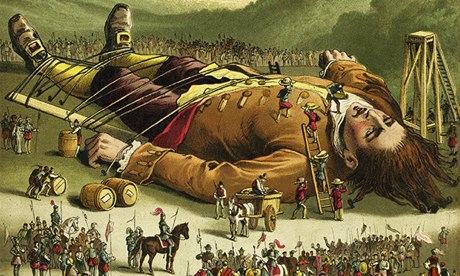
This is all an attempt to consciously and unconsciously hedge against complexity to reduce uncertainty in the vastness of social physics. Central to antifragile system operation is the need to reduce uncertainty. By manipulating beliefs & perceived believes, agents with significant power create the mechanisms for stability required by antifragility. Widening the scope of complexity and variation greatly expands intractibility in sociophysical chaos.
To mitigate this, antifragile design philosophy applied to social systems will engineer logistics processes to: assert risk, guide potential problems away from the combinations of conditions that might set them off and analytically process digitized records with social data science. Proactive means of generating dynamics in the system allows people to interrogate their environment, making inferences about the true beliefs of other agents in the system or about information they have access to.
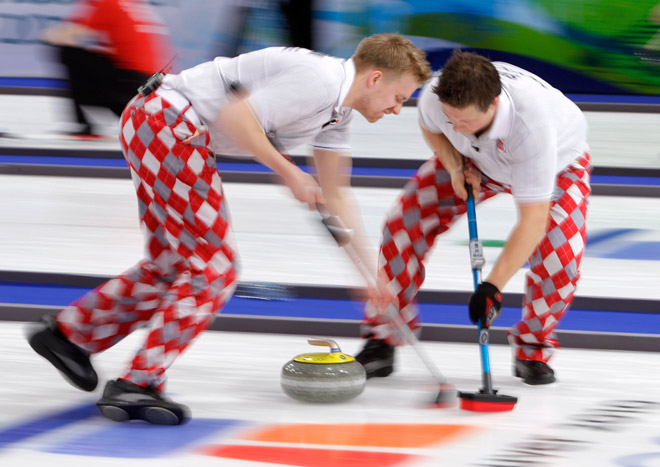
When these logistic process structures involve stringent secrecy, coverups of mistakes, distortion of information and amplification of disinformation, this may work sometimes or in most cases. However, sometimes these factors contribute towards a system being blinded to parts of itself, increasing the likelihood of undesirable Black Swan events. Not all Black Swan events are negative, but since it is their ineffability and poor definibility which causes them to escape undetected as randomness, then might the amplification of disinformation suppress the recognition of an event signature that would have otherwise never been a Black Swan?
The tendancy to amplify beliefs & perceived beliefs to encourage consensus, discourage divergent beliefs & behavior, can render the system simpler to understand and easier to manage, yes. However, the system does not exist in isolation, nor is it wise to believe you can covertly operate on the sociological organism, as though your secrecy can be post-justified as variable control.
⊗ ∆ ⌈viii⌉ Spectral Coherence of Knowledge, Information and Agent Context Strongly Influences Conceptualization and Anticipation
From an informal assessment of the mathematics of social physics, it has become clear that it is critical to bound complexity. Obvolution and allineation of information produces constructive interference that artificially increases spectral coherence, which partly motivates perpetuation of religion. This profoundly constrains the complexity of sociophysical systems, enabling those in power to limit the “search space” of possibilities. Throughout history, this desire to restrain innovation and divergence has occasionally resulted in blind zeal, judgemental attitudes and other horrible consequences.
None of that is justified, which is why we need to wake humanity up, so we can choose to cooperate and form a collective basis. Otherwise, our fallibility and susceptibility to the seven deadly sins will foment conflict at a time of exponential turbulence. This simply means we need to think about who we are and collectively decide on how our culture should transform. If we do not architect artificial feedback loops for antifragile constraint of difficult problems like these, instability may become rampant.
At a minimum, spectral coherence of information is fundamentally linked to cultural universals, their semiotic representations and sociohierarchical convolution of teleology. These cultural universals then form a kind of origin, centered around the origin of semiotics: symmetry. So, we always have those universals in common: we can count on these to firmly root a large region of informational spectra to a recursive kernel descending into symmetry.
In Abstract Algebra, The Kernel Always Maps to the Origin

In Semiotics, The Spaces Recursively Descend Into The Signifier for Symmetry
With too much spectral decoherence, models of information are could become totally unscalable, inschematic and incapable of being indexed. If information models are simply not indexable, that means comparing, analyzing and mutating data of various models becomes more precarious as the models are necessarily more distant. Regional convergence and homogeneity of belief systems has always been necessary to make any useful inferences. As the next years unfold, the region of spectra that is more than infinitessimally amplified between two or more people – the domain of spectral overlap – will continue to shrink unless there are mechanisms in place to address it.
Semioteleological mappings are the structures that explain how we respond to signs: what they mean to us, how they are related, how they can be used as simili with predictable response or used for conditioning. Spectral decoherence can be considered along many categories: ingested news articles, beliefs, music, art, netflix series, etc. This all leads to rampant speciation of these mappings expands so that no one can predict anything.
Socialism, communism and fascism – viz. any political system where freedom of information is constrained – they all typically plan to use social engineering. Problem: the specific psychosocial tools for social engineering simply stop being effective or their effects just aren’t predictable. You cannot expect to predict specific or general behavior and you cannot expect to extrapolate.
Imagine predicting the motion of particles while turbulently mixing a fluid containing random quantities of molecules composed by nearly every element. Each has its mean ways of moving, whereas social particles with amplified schema are somewhat more predictable, almost like crystals. Soldiers in a greek phalanx have the same kind of crystalline aspects to their information schema. They have been imbued with the information & information schemata of their training, they can anticipate how each other filters information and anticipate each other’s actions. Religion is an attempt to hedge against domain complexity by creating a primary schema of information shared amongst a sufficiently large set of agents.
By the way, I detest tools like social engineering and the ideologies that use them: they rob us of our individuality; their ideologies hold human dignity in contempt; they almost always lead to tragedy. However, the problem of spectral decoherence, including society’s inevitable reaction to this understanding, is single most important inference I’ve reached about social physics. I fully understand how people would react to this if they don’t understand the philosophy and math backing it up. My sentiment and opinions on my own ideas do not matter: I do not like this one in particular. I need someone to argue or demonstrate that I am wrong. Otherwise, I can see no other way because this phenomenon leads to the development of many concavities in non-linear sociophysical systems, which inevitably produces instability.
Yet, this is my message: that we need to focus on these problems. And what happens to me? Psychological torture. Social engineering at its finest. Good luck with that: you’re not paying attention to the right things. Instead, anything I try to say is suppressed and anyone who reads it or repeats it is subject to the same torment. Why? Because people want to USE it. I get falsely labelled and then I write to make things clear, accelerating my persecution, of which I have been completely unaware… Really?
Schematic Change Yielding Self-Perpetuating Changes Over Years, Decades or Centuries (i.e. Religion)
Those who profess knowledge but disclaim or disdain religion are fools. Change to the structure of ideas or to the shape of society’s conception of them is perhaps the highest power and one that, for now, has been exercised with beneficent intent, however many conflicts have been waged in the name of God, religion or faith. It is wise to question, but simple to dismiss the ideas of religion, based on contrived, illiteral misinterpretations and arguments designed to deceive.
Every institution created by man is just as fallible as the weak-hearted among us: science never roots its knowledge or beliefs, shifting from form to form. Thus, it is beholden to nothing eternal, but the truth which will forever elude it. It’s ability to metamorphisize is both its strength and its fatal flaw. There is no eternal truth that can be inculcated into the masses; opportunistic control over the shape-shifting nature of science drives greed and lust for power. A belief system which holds nothing sacred will eventually empower violent, dehumanizing, utilitarian policy. The key is balancing across this paradoxical tightrope of belief systems: both those locked into professed eternal truth and those structured around the search for elusive truth.
Look at what is happening now: do you see the potential for greater harm that ever before from novel religions who have lost their way? Religion was always intended to fertilize the cultural soil of mankind, that it might grow virtuous men who would stand for truth, justice and the metaphysically certain Law of God. However this was relevated to man for each spiritual movement, the intent was to identify a perfect conception of values that would allow man to transcend the Law of Nature. Humanity’s conception of monotheistic God emerged from the collective unconscious, inspired by the desire to see one another as truly equal before an omnipotent, omniscient being.
⊗ ∆ ⌈ix⌉ Social Circuitry Enables Sociophysical Energy Flows, Where The Superposition Principle Applies Circuit and Network Topologies. All Exist Simultaneously
The topologies of financial networks are more clear than sociophysical networks. Moreover, mechanics of financial energy types tightly preserve equivalent exchange, except through pricing fluctuations and transduction of value via currency exchange. Even though the property of system linearity is boolean, financial energy types preserve equivalent exchange moreso than sociophysical energy types. Therefore, in this regard and when considering potential network topologies, they are simpler than sociophysical systems.
Energy Types and Transduction Mechanisms
★ Financial Instruments
★ Stocks, Bonds, Loans and Credit
★ Derivative Contracts
★ Currencies and Forex Products
★ Other Financial Energy Types
★ Real Estate, In/tangible Assets of Corporations
★ For The Assets Above, Appreciation & Depreciation Thereof
★ Expansion & Constriction of Contractual (Rights)
★ Potential and Mobilized Labor
For each financial energy type, there transduction mechanisms to other energies. Banks market accounts to consumers, businesses and other banks by offering competitive interest rates. These appreciate energy over time to consumer’s account on the frontend, but they must have a profitable structure on the backend. The Fed modulates the components of loan product structures on the backend by encouraging institutions to raise and lower their interest rates. By doing so, the Fed manipulates the energy transduction mechanics that lead to financial energy accumulation and diffusion.
There are many types of financial institutions providing other energy transduction mechanisms. Forex trades and futures allow for speculation on currency valuation. The IMF has a currency basket called SDR’s which functions as a large resevoir of currencies under their control. The SDR could stabalize large forex fluctuations. The Yuan was recently added to the SDR’s currency basket. Labor enables the conversion of time and energy and facilitates to diffuse wealth into the hands of the common person. Lending institutions optimize their lending reserve leverage by collecting payments on debt.
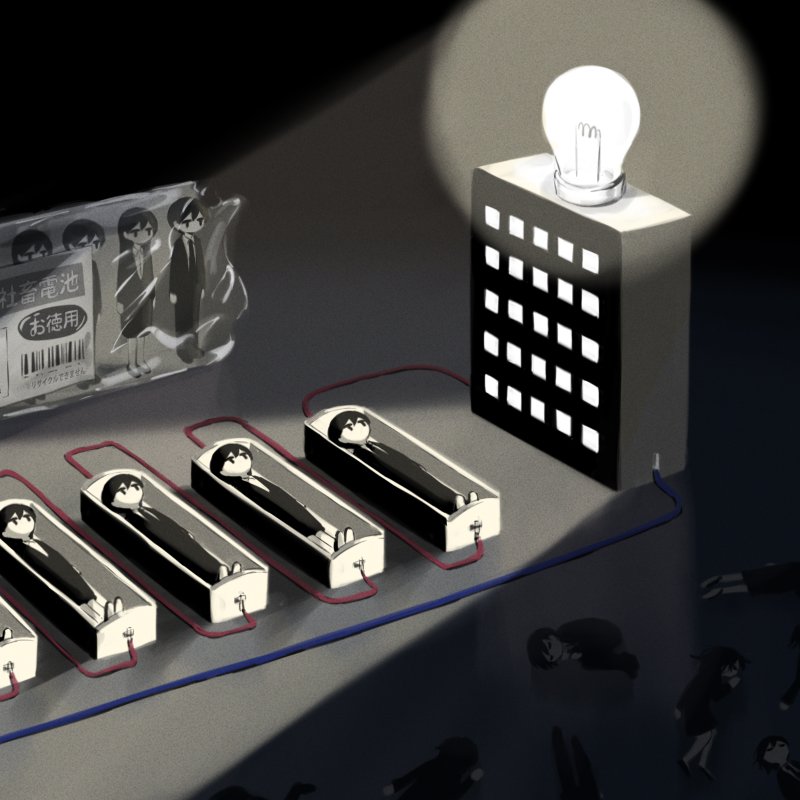
The goal of the system is efficiently and evenly distribute financial energy types. The same quantities financial energies can be leveraged by those in power productively, selfishly or potentially to the detriment of everyone connected to the system. People think of money as an abstraction of commerce. Money is also an abstraction for social energy types: it provides a store of value that you own that no one can take away from you. Through it, you can compel local, meaningful change. It might be difficult to accumulate, but if you are strong, it is yours. By accumulating these financial energy reserves, one is charging a battery, providing potential projection of flux into the financial and social graphs.
The communist manifesto outlines ten planks commanding the monopolization of institution-types, but the goal is total control of everything a citizen might use for power: currency via central banking, communication, transportation, private property, knowledge via education, and more. After a communist revolution, you have no means of accumulating anything you might use for social institutions. That includes private property and money as a store of value, by which you can influence your surroundings and adjacent sociohierarchical structures: AND NO ONE SHOULD EVER TAKE THAT FROM YOU. Communists go further still: they monopolize the social hierarchies, meaning there is no space for upward movement in society, except through their gatekeepers.
So, via abolition of private property and via abysmal savings rates, communists undermine financial-to-social energy transduction pathways. This is why communism is its own antithesis: it is not freedom for the masses; it is merely a changing of the guard. People are rendered less capable of upward motion after a communist revolution, which inevitably turns to empire to fuel its own expanding deficits.
As complicated as energy dynamics are in financial networks, they are much simpler than in sociophysical networks, whose energy types or network topologies are barely effable and whose transactions are rarely quantified. An accurate approximation of topology can be subtractively defined by starting from the complete graph of all people, businesses, institutions, government entities, etc. From there, the financial graph can be etched out by subtracting all of the graph edges that cannot or do not perform transactions.
The Set Of All Cycles And Cliques in the Complete Graph Where N=5
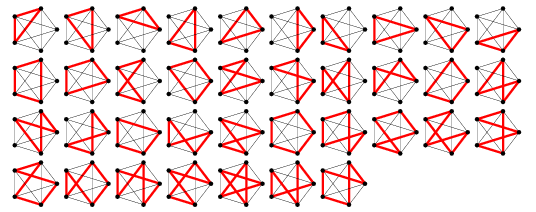
Such a hypothetical financial graph represents all the ways all financial entities can be connected. Still, there would be at least trillions of nodes and thousands of potential edges over which financial interactions and transactions can proceed, so this graph is hopelessly intractible: it takes so much time to calculate that consistency could never be maintained, a la CAP theorum.
By model graph approximations, you can emulate networks and flow of energies on the global financial graph. Because the implications for financial and social networks are so vast, finding approximations of graphs and reducing large graphs into sparse systems is a major focus of math and CS research. By proving your graph reduction emulates some financial or social circuits with some mathematic guarantee of parity, you can efficiently simulate these systems.
Thus, similiary, social networks should be modeled with a superposition of topologies, since their structure is perplexing and each node constructs its own model of topologies for energies. In effect, many networks become superimposed onto each other, just like the superposition principle for quantum particles. This idea of superposition of various networks is distinct from systems where there is one clear network structure because those networks can be more simply emulated with a single topology.

The Prototypical Superposition Calculation In Electrical Circuits
In electrical circuits with multiple power sources, current and voltage can be predicted by decomposing the circuit, then applying the superposition principle to sum over the topologies for each voltage and current source in isolation. In sociophysical networks, each node is a source of energy, not unlike voltage or current sources in electrical networks. However, the superposition principle differs from that in electrical circuits in these key ways:
★ Each node defines its own energy types
★ Each node has its own definition of topologies, which are always mutating
★ Each node processing social energies and topologies subconsciously and to varying degrees of proficiency
★ Each node produces its own energies on the network, but also acts analogously to other circuit component types (e.g. resistor, capacitor, transistor, etc)
A sociophysical node should at least include any entity through which will or energy can be projected. How and whether MAF/ASF entities, inanimate objects or physical aspects of topologies should be models as components of circuits is fathomable and downright contentious. Each entity is certainly a source of energies in a circuit – yet, how might other types of nodes affect sociophysical energy flows?
When the bell rings in a clocktower, can this not project information, subconsciously inform entities of the current time and thus influence their behavior? It would certainly matter to Kant, if his watch were broken. Specifically, how do mundane stimuli like this shape energy flows in sociophysical models and how might accounting for such miscillanea scale tractibly. Better ask a Feng Shui master.
The dynamics of energies in a virtual, superimposed topology depend greatly on how the active interactions relate to each node’s perception of network topology. This topological superposition dramatically changes how individual components of the networks affect each other and contribe towards the energetic dynamics of the overall system. These models would lead to intractible expansion, if it were not that the superimposed topologies are constructed as graphs permuted components that essentially represent the same social nodes.
A Scientology “OSA” Operation To Alter The Sociocircuitry Around An SP’s Social Boundary
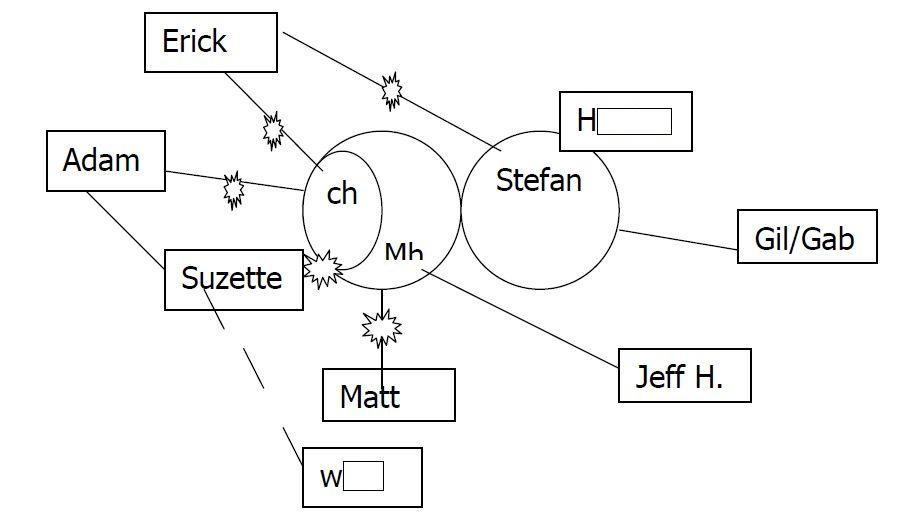
In the above diagram, the goal is to encourage total diffusion of the target’s sociophysical energies, robbing them of everything they might produce with their time. By deforming the topological structure of more logical sociophysical spaces, this exponentially amplifies the probabilities of some increasingly infinitesimal set of events, rendering a target profoundly more predictable.
If you’re a marxist, you’re sadly confused. If you’re a leninist, GTFO.
Time is the one shared resource equally distributed to every person on the planet. With it, we contribute our energy output towards some individual or shared goals. A traditional marxist tactic is to rob the rich, productive or targeted of their time. For members of the proletariat in a pre-communist system, their time is worth 3 to 50 times less than that of a bougeousie target. Like lilliputians, they can work together for sociohierarchical transformation.
Corollary to the Superimposed Topology Principle: Range Bounding
① Limit a target’s social boundary (1° & 2° neighborhood)
② Reduce the scope and types of potential social interactions
③ Reduce the target’s interaction options (e.g. by obliterating their income, imbuing them with a persecution complex, etc.)
④ Prevent the target from moving at all costs
⑤ Minimize the set of locations and times where social interactions might occur (e.g. suspending license, inducing/encouraging Non-24 Disorder)
A corollary of this postulate: render a target more predictable by reducing the range of dominant topologies in the superposition. Then, sociophysicial energies flow and transduce more predictably. When you optimize the following, modeling a target’s behavior is no longer tractible. The space of superimposed networks with highly variant contributions collapses and by sociophysically range bounding them, you ensure all potential topologies are in-phase, as well as the energetic components for potential interaction trandsuctions.
By limiting the size of a target’s 1° social neighborhood, generally reducing the scope and type of potential interactions, and reducing the options for that node, you make them exponentially more predictable. This target becomes range bound, rendering their sociophysical motion restricted at all costs – especially major physical relocations. Here, sociophysical motion does not refer to motion in physical spaces, but to all motion of energy across any sociophysical topologies. By pragmatically restricting this motion, it renders you more predictable, subjugated, fearful and pathetic in all ways. You are prey that has been cornered. Run to Switzerland.
⊗ ∆ ⌈x⌉ Social, Financial and Other Energetic Flows Signal Interest and Intent Via Frequency, Magnitude and Abstract Spectral Decomposition
At the micro and macro level, similar information dynamics facilitate inference via financial and social capital flows. In macroeconomics, a time-series, spectral and differential analysis of global financial capital flows indicates not only supply and demand, but long-term expectations of investors. On the micro-scale, investment of time and energy in short-term social interactions indicates their intent to continue investing in the relationship. In almost every situation, most people have something they’d rather be doing, especially when compared to interactions with people they don’t know.
If you’re playing the numbers to maintain high velocity when networking, at various points in your first few conversations, prompt them with questions, jokes and microtasks requiring current or future investment of energy. Probe their upcoming plans, schedule and the like to identify outright exclusions: those questions wouldn’t yield valid inferences in this context. It’s important to sort your tests for reciprocal investment by energy and time requirements: start at the lower bound and increase as you establish rapport. One should avoid being distant and overly-calculating when using techniques like these. Still, they are good tests for gauging compatibility and chemistry via psychosocial valence. Sometimes people are looking for something, but not always. If you are, be pleasant and move on.
The currencies of all social success, IRL and online, are time, attention and mnemonic residue – i.e. in the sense that, as you interact with people, you create memories together. These memories compose kinds of psychosocial artifact, accessible by your mind, which uses them to introspect, form narratives, and rank its content for emotionally-focused redirection of attention. To people, the relevance of psychosocial artifacts like memories are determined by frequency, density, novelty and emotional relevance. Minimal and maximal values for the above metrics can have a wide variety of impact on how people think about memories and stories.
Newsfeed algorithms similarly rank digitized interaction artifacts: the more recent, novel or popular an artifact is, the more attention it is given. Why? This algorithm, in people and on newsfeeds, is based on an information graph with a temporal dimension – it’s time-series signals analysis build ontop of information and graph theory, instead of simply linear or non-linear spaces. When people create new content, it goes to the top of the stack. That’s what other users see, think about and react to: it’s a self-propelling dynamic, rendering these algorithms more susceptible to feedback loops.
Cross This Streamgraph Visualization With Graph Theory and Simply Fourier Transform
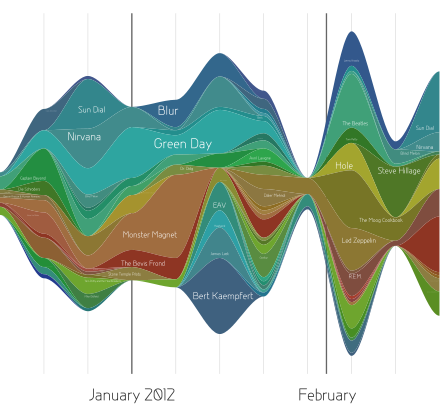
When there is a total vacuum of these artifacts, our brains search for information about categories of people, places, ideas and things to fill in the gap. If someone else wanted to write your story for you, this void is easy to fill in. For a group that might actually conspire to do so, isn’t that convenient? It means signals of disinformation they might project don’t need to be amplified, since they are already consumed and internalized disproportionally to be reflected through society, which has a similar ergegorical need to satiate that void. This particular psychosocial dynamic for categorical information is strongly driven by information economics. Both in people and in social groups, whose lack of supply sometimes increases demand, especially for tasty morsels of virally designed information.
Before that void was filled, have you contributed to the spectral content of that category’s information distribution? Here, spectral content means the associations that can be formed and attached particular category or microcategory of information. When that void is filled, what can you do about the distribution of information? Almost nothing: the iotas – references to information – have already been digitally, neurologically and physically distributed. The more viral, the wider the dissemination of information. The more people want to destroy you, the more that information economics drives them to shop around for secrets to undermine you. These disseminated iota requires an inordinate amount of energy to undo.
⊗ ∆ ⌈xi⌉ Disruption of Connections & Interactions Alters Flow Of Energy & Power, Physically, Logically and Virtually
To fully comprehend this section, you’ll need to be able to envision time-series analysis of functions as signals, along with their spectral-domain arrangements and combinatorially permuted functional domains. Don’t worry, there’s pictures – without which I would never have understood any of this myself.
The original motivation motivation behind spectral analysis of linear, non-linear and chaotic systems is that it helps one infer and develop parameterizations for models. In the 80’s, by sampling values from chaotic attractors, one could reconstruct an approximation via spectral analysis, even though the dimensionality of the attractor might be unknown.3
You Always Get One Algebra Fo’ Free!
Complicated probabilistic systems have produce values with correleation. This incldues those systems with many in/finite Markov chains, with or without physicality and those modeled on Bayesian trees or on graphs. They have observable values, which form the basis of many functions in the time domain. Via tensor analysis, combinatorics, specialized non/free algebras and spectral graph theory, one can infer the parameterization or interrelationships of the model generating the observed data – or at least adequate numeric approximations of it. Inference of structure and parameterization of probabilistic systems will almost always incorporate the decomposition of sparse matrices, which can represent frequency of event observation.

The gradient and laplacian are useful linear operators everywhere. To those who so indecorously sling abusive notation \( \nabla^2 F \) – just wait: when you need the laplacian in tensor calculus, this becomes ambiguous. Together, the laplacian and the tensor product provide more power than perhaps any other basic tools in math.
The power to recompose techniques only made available by mastering these two tools opens more doors than perhaps any other base tools in mathematics. Without understanding these tools and a phenomonological understanding of the problems they solve or approximate, you are completely trapped within a false paradigm where most things are unknown and unknowable.
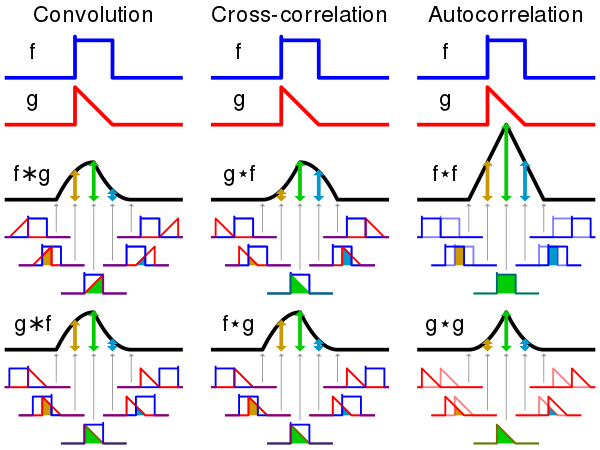
Time Series Convolution and Correlation
Under most conditions, the Fourier Transform is a linear operator and so are differential operator and the laplacian. This means their application in most circumstances is associative and commutative. Of course, when applying the laplacian or fourier to high-dimensional surfaces, one must account for the combinatorial dimensions to which it could be applied, which conveniently simplified or abstracted away from <bra | ket> operator notation.
Since these operators’ linearity preserves associativity and commutatitivity, you can rearrange their order of application, so long as the dimensional structure of application holds. This allows you to construct construct time-domain waveforms that represent the differential of the fourier transform – and vice-versa. This simple process, combined with a few of the other techniques described in the 20 postulates, enable you to reconstruct signals when you don’t know the circuits or logical topology – and vice-versa with the converse of functional application.
In applying this technique to sociophysical models, some data models are inschematical – dare I say irrational? That is, their schema can never be perfectly conceived. However, you don’t need this: any nodes, edges and paths with significant influence more prominently affect the system. Therefore, under almost all circumstances to infer paramaterization and event correlation, you only need assert the strongest signals, then oscillate back and forth between the application of inductive and deductive reasoning with combinatorial permutations.
How do you know what to measure? How do you understand the prima facie relationships of the data points and data point types you have measured? If tractibility is the ultimate challenge here, then how do you decide where your limits are? How far into the network or graph do you apply combinatorial analaysis towards the inference of structure? If data points have been recorded at slightly different times or the timestamp on datapoints themselves is inherently skewed and accurate, then how does this affect the structure of some iterative time-series graph?
Time Series Analysis of What, Exactly?
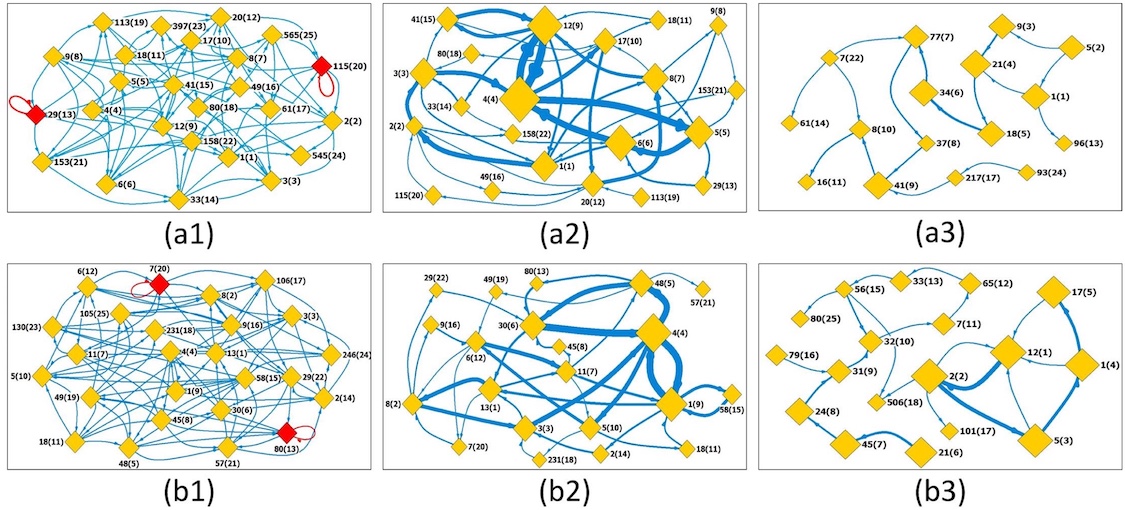
The picture above is from Visibility Graph Based Time Series Analysis, which thoroughly covers time-series analysis applied to informational graphs and networks. The paper’s introduction 4 provides a 10,000ft view of the basic techniques and their pitfalls.
In electrical circuits, the directionality of power flows matters. Components like capacitors temporally regulate electrical flow, though voltage regulation and power distribution in CPU’s and your Macbook Pro is undoubtly more complicated. The directionality of these power flows matters: alternating current, periodic pulses of energy and transistors expanded phenomenological possibilities of consumer electronics. Sociophysical networks work similiarly: direction of energies dramatically changes how social circuit components interact. With cyclicly alternating energetic flows, like AC or N-Phase power, the components of those networks change their proactive and reactive behavior dynamics, yielding macroscopic phenomenological divergence. Since sociophysical circuits permit energy flow in more than two topologically local directions simultaneously, this implies a profoundly greater speciation of components types and interaction dynamics.
For sociophysical circuits and energies, a concept analogous to work can be imagined. The lack of true equivalent exchange dramatically alters work dynamics. Work can include both sociophysical thermal and kinetic energy. The mechanics for flow of informational energies implies that this projection of informational flux can induce allocation and dispersion of physical systems: people physically react to information flow. When modeled thermodynamically, crowds have temperature and vibrational mechanics. Information, when speciated and quantified, almost always flows from high concentrations towards low concentrations.
A Formula You Might Find On A Cocktail Napkin
\( \left\lVert \Phi_{(I \otimes J)} \right\rVert \propto \frac{\left\lVert \phi_{i} \cdot \phi_{j} \right\rVert_{(I \otimes J)}}{\left\lVert \phi_{j} \cdot \phi_{i} \right\rVert_{(I \otimes J)}} \)
★ To quantify values in the “field” of information overlayed onto sociophysical spaces, metrics are required. It is difficult enough just to describe or define the structure of quanta of information.
★ Once values in the field are defined for certain information types, \(\nabla\), \(\nabla \cdot\) and \(\Delta\) can be understood more clearly.
★ Diffusion of information compels holons to randomly gravitate downwards along the surface(s) of gradients of information, in the absence of some other force(s) pushing it back. As society becomes superconnected, the paths available for motion of information expand tetrationally, as the biggest difference in high-dimensional spaces is the presence of additional directions and angles.
★ Holonic information particles can be modeled symbolically. However challenging, this provides a basis for the anticipation of information flux as the consequence of movement towards greater entropy of distribution for holonic particles in sociophysical spaces.
This is partially responsible the phenomena of paranoia and extreme isolation that occasionally arises in intelligent people, with IQ >= \(3 \sigma\). For people like this, they simply never need to ask others for help and if they don’t artificially reinforce social skills in childhood, their restricted range of experience is one factor to potentially stymie their social development. They simply don’t need to ask for information because they can resolve it themselves,. In extreme isolation – deprived of all social signal – the same causes of that phenomenon also manifest as paranoia. When they aren’t socially informed or are completely socially disconnected, they simply never run out of avenues by which they might answer questions. Moreover, the ranges of questions and methods by which they might ascertain this are profoundly expanded.
Occasionally, attempts to isolate intelligent individuals can backfire: the extreme socioinformational deficiency results in a compulsive need to consume knowledge. Those psychologists who study intelligence must know this, but those with IQ >= \(3 \sigma\) are divergent. Further still, if the individual in question is subject to a constant deluge of disinformation, any the beliefs of any who study them will be unavoidably form via consumption of fruit of the poisonous tree. For a completely disconnected individual – as discussed above – this means they have no ability to create/diffuse authentic information about their identity, their persona, and their beliefs. To accurately assess their psychosocial state, there is almost zero authentic information, critical or material.
For those prolificly malicious promulgators of architected disinformation to cover their own ass, they must constantly isolate & beguile the intelligent individual in question. Otherwise, a genius savant’s prolific inductive, deductive and metacognitive abilities will process any available information, revealing everything: their life has been one giant lie. This in itself – if the intelligent individual in question is not silenced, killed or distracted – will certainly backfire.
Speed Of Thought: Part Three
This next part covers sociophysical postulates ⌈xii⌉ – ⌈xx⌉
-
Position-sensitive propagation of information on social media using social physics approach, Ishii A., Mizuno T., Kawahata Y., arXiv:1706.00569 [physics.soc-ph] (2017) ↩
-
Groundwater qanat potential mapping using frequency ratio and Shannon’s entropy models in the Moghan watershed, Iran, S. Naghibi, H. R. Pourghasemi, Z. Pourtaghi, A. Rezaei, Earth Science Informatics (2014) ↩
-
Geometry from a Time Series N. H. Packard, J. P. Crutchfield, J. D. Farmer, and R. S. Shaw, Physical Review Letters (1980) ↩
-
Visibility Graph Based Time Series Analysis Stephen Mutua, Gu C, Yang H, PLoS ONE10(11): e0143015 (2015) ↩